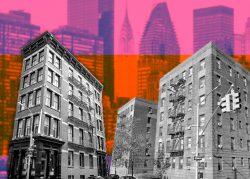Landlords whose tales of soaring expenses were largely ignored by the Rent Guidelines Board can now say, “Told you so.”
A statewide analysis of rent-controlled apartments — a subset of rent-stabilized housing — shows the deficit between expenses and revenue may be even steeper than owners claimed.
The board’s vote in June dealt a major blow to landlords, who sought a 2.75 percent increase, in line with the 3 percent rise in costs estimated by the board’s staff. Instead they got six months of 0 percent on top of 2020’s full-year freeze, then a 1.5 percent hike for one-year leases.
Owners’ groups called that “unsustainable” and “incomprehensible.” Now a preliminary report by the state’s Division of Homes and Community Renewal estimates that to keep pace with costs, a rent-controlled unit’s owner would need to raise rents by 11.4 percent during the 2022-2023 leasing cycle.
Read more


The report informs the Maximum Base Rent Program, which ensures that rent-controlled owners get enough income to cover maintenance and improvements. Every two years, the state averages the percent change of landlords’ costs, including for taxes, water and sewer, operations and maintenance. It then allows stabilized landlords to apply for a rent raise in line with those costs.
Because buildings with rent-controlled units have rent-stabilized units in them as well, the 11.4 percent estimate should reflect the rising costs of all rent-stabilized units, said a spokesperson for the Community Housing Improvement Program, a landlord group.
Before the Housing Stability and Tenant Protection Act of 2019, owners could request a hike that would get rents closer to the Maximum Base Rent — up to 7.5 percent over a two-year period until the rent reached that maximum.
Under the new rent law, however, hikes are capped at either 7.5 percent or the average of Rent Guidelines Board increases over the past five years, whichever is lower. With three freezes in the past five years, the new stipulation has severely limited what landlords can request.
Owners of rent-controlled units are looking at a 1 percent increase next year.
Landlord groups see the report as evidence that the 2019 law devalued their buildings. In the wake of the state law’s passage, owners predicted its caps on rent raises for improvements would undermine maintenance of their buildings. A Furman Center report showed the value of properties in which half of the units were rent-stabilized had dropped just six months after the law passed.
Within the state’s findings — called the Standard Adjustment Factor report on Maximum Base Rent — the category contributing the most to the need for a higher rent was “Return on Capital Value Allowance.” CHIP described it as a gauge of a building’s value considering depreciation caused by high vacancy rates or decreased rent collection.
“It is fair to say the declining value of buildings is the biggest driver for the MBR SAF going up 11.4 percent,” said the spokesperson.
Asked whether the 2019 law is preventing landlords from collecting the rent needed to operate and maintain buildings, a spokesperson for Homes and Community Renewal said the agency protects the rights of rent-regulated tenants by enforcing the state law.
In the report, the agency acknowledged that the law created a discrepancy between the rent owners need to maintain buildings and the amount tenants ultimately have to pay.
Other analysis has found that landlords cut back on maintenance to offset declining rent revenue during the pandemic.
